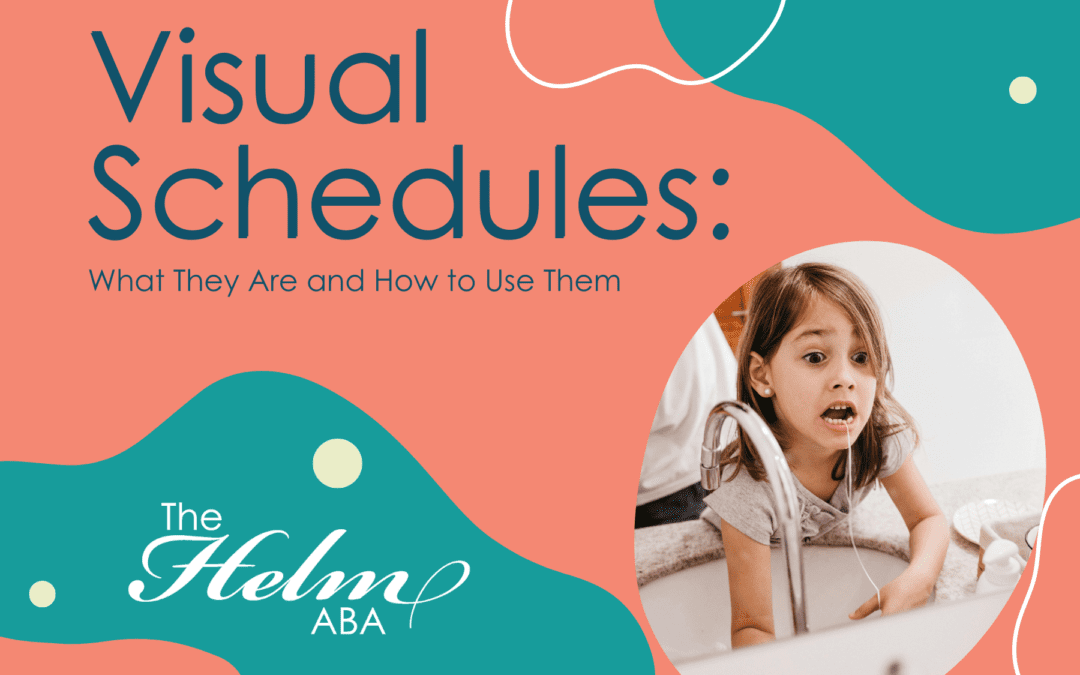For children with autism, having a predictable routine can make a big difference in their day-to-day lives. Visual schedules are a helpful tool that can show them what to expect throughout the day. These schedules use pictures or symbols to break down tasks and activities, making them easier to understand. Let’s explore why visual schedules work so well and how you can create one for your child.
Why Visual Schedules Work
- Reduces Anxiety
- Many children with autism feel anxious when they don’t know what’s coming next. A visual schedule helps them feel more in control by showing them what to expect. This reduces surprises and helps them transition between activities more smoothly.
- Supports Communication
- Some children with autism struggle with verbal communication. Visual schedules provide a way for them to see and understand what’s happening, even if they have trouble with spoken instructions. The pictures act as a clear guide.
- Builds Independence
- Visual schedules empower children to manage their own routines. By seeing what they need to do next, they can complete tasks on their own, without constantly needing reminders from parents or teachers.
- Creates Structure
- Children with autism often thrive on routine. A visual schedule helps create structure in their day, making it easier for them to follow a set routine. This can be especially useful during transitions, like going from school to home or from one activity to another.
How to Create a Visual Schedule
- Choose the Right Format
- Visual schedules can be made in different formats, depending on your child’s needs. Some options include:
- Picture Cards: Use printed images or photos to represent activities.
- Drawings: Simple drawings or stick figures can work if your child responds well to that style.
- Apps: There are several apps and websites available that create digital visual schedules, making them easy to update on the go.
- Visual schedules can be made in different formats, depending on your child’s needs. Some options include:
- Pick Key Activities
- Decide which parts of the day you want to include in the schedule. You can start small by focusing on specific routines, like morning or bedtime, then build up to a full-day schedule. Common items to include are:

- Getting dressed
- Breakfast
- School or home activities
- Playtime
- Lunch/dinner
- Bath time
- Bedtime
- Decide which parts of the day you want to include in the schedule. You can start small by focusing on specific routines, like morning or bedtime, then build up to a full-day schedule. Common items to include are:
- Use Simple and Clear Images
- Choose images that are easy for your child to recognize. You can take photos of everyday objects, print pictures from the internet, or draw your own. Make sure each picture clearly represents one activity.
- Keep It Flexible
- While structure is important, it’s also helpful to be flexible. Things can change, and it’s good to teach your child that plans may sometimes be different. You can create a “change card” or have an extra slot for unexpected activities.
- Arrange the Schedule in Order
- Organize the activities in the order they will happen. If your child understands the concept of time, you can add times next to the pictures. Otherwise, just focus on the sequence of activities. For example, breakfast comes before getting dressed, and playtime follows lunch.
- Use Velcro or Magnets for Easy Changes
- If you’re using picture cards, attach them with Velcro or magnets so you can easily switch them around. This makes it simple to update the schedule if something changes or if your child wants to participate in the process of setting up their day.
How to Use a Visual Schedule
- Introduce It Slowly
- If your child has never used a visual schedule before, introduce it one step at a time. Start by using it for just one part of the day, like morning or bedtime, and gradually add more activities as they get used to it.
- Review the Schedule Together
- At the beginning of the day, sit down with your child and go over the schedule. Point out the different activities and explain the order in which they’ll happen. This helps prepare your child for what’s coming next.
- Check Off Activities
- Once your child finishes an activity, they can remove the picture or mark it as complete. This helps them feel accomplished and gives them a sense of progress throughout the day.
- Praise and Encourage
- Praise your child for following the schedule, especially if they successfully transition between activities. Positive reinforcement can make the process more enjoyable and encourage them to stick with it.
Conclusion
Visual schedules are a powerful tool for helping children with autism navigate their day. By reducing anxiety, supporting communication, and fostering independence, they can make daily routines easier for both kids and parents. Creating a visual schedule is simple and can be customized to fit your child’s unique needs. With practice, visual schedules can become an essential part of your child’s routine, helping them feel more confident and in control.

